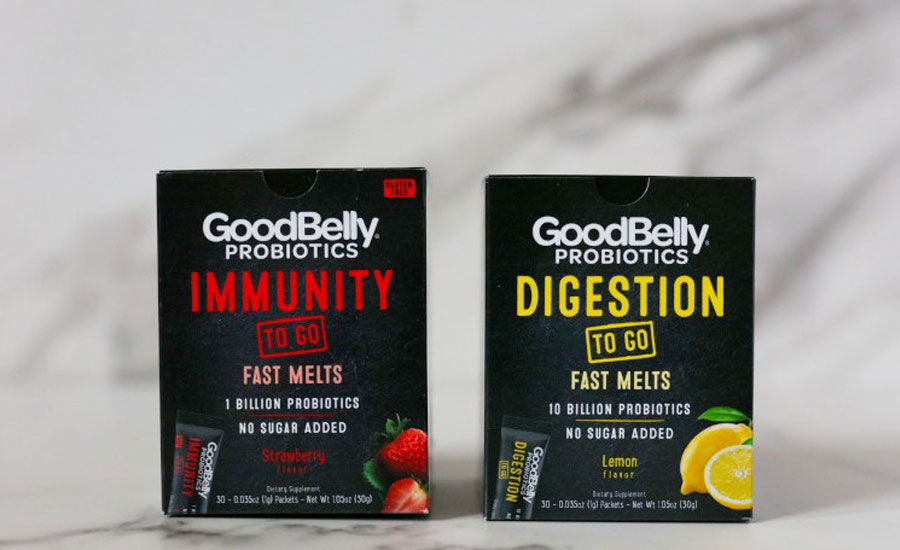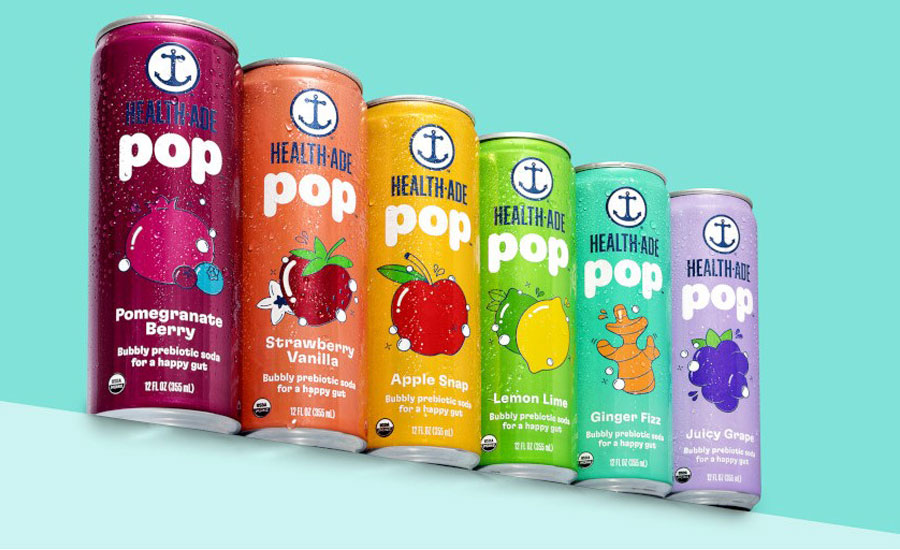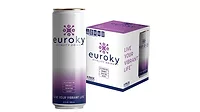Category Focus
Immune health benefits help probiotic beverages appeal to diverse consumer groups
Assortment, pricing can help probiotic drinks reach more households
1170x658.webp?t=1676389560)
Image courtesy of Poppi
Known for his leading roles in comedies, dramatic films and blockbusters including “The Mummy” trilogy (1999–2008), actor Brendan Fraser, after his work began to slow in the late 2000s to mid-2010s, revitalized his career with an appearance in “The Whale” (2022) — earning him his first Golden Globe Award nomination. Fraser, when addressing his career path, said: “I’m starting to judge success by the time I have for myself, the time I spend with family and friends. My priorities aren’t amending — they’re shifting.”
Within the beverage industry, as COVID-19 brought heightened awareness of immune health and a shift toward self-care, interest in probiotic beverages has spiked considerably, experts note.
“COVID-19 had many implications, such as consumers from around the world becoming more aware about what it takes to stay healthy,” says Sally Lyons Wyatt, executive vice president at Information Resources Inc. (IRI), Chicago. “This awareness provided a tailwind to probiotic beverages given the immunity health benefits.
“In fact, probiotic beverages have increased both dollar and unit sales for the past three years,” she continues. “We found probiotics in over 30 beverage subcategories.”
Roger Dilworth, senior analyst at New York-based Beverage Marketing Corp. (BMC), echoes similar sentiments, noting that, although interest in probiotics preceded the pandemic, consumers’ more recent health concerns have served to bolster interest in such beverages.
“Likely there has been a growing consumer shift toward self-care with more information coming to the consciousness that even seemingly unrelated areas, such as mental health, may be related to ‘gut health,’” Dilworth says. “Also there are claims that probiotics can aid in digestion and possibly weight loss that are weighing on consumer purchase decisions.”
IRI’s Wyatt adds that, during the pandemic, as many consumers changed what they ate and drank, many found it easier and more filling to “drink their immunity benefits versus eat their immunity benefits.”
“Since consumers were not ‘on the go,’ we saw at-home convenience increase,” she explains. “For products with immunity, we found some traditional on-the-go foods wane (e.g., bars), but found others increase (e.g., beverages). As restrictions lifted, we saw consumers either getting back to work and leaving home or still working from home or having a hybrid work approach.
“Some of the new COVID-inspired eating and drinking habits ‘stuck’ and that is the case for probiotic beverages,” Wyatt continues. “Beverages providing more than hydration were winners. They are convenient to drink at home as well as on-the-go.”

Image courtesy of NextFood Inc.
Immunity, gut health remain top of mind
With a heightened focus on health and immunity, probiotic beverages are proving to be an important part of consumers’ routines, experts note.
“Consumers have embraced the use of probiotics since they help restore the natural balance of the gut and with 70-80% of immune cells being present in the gut, the focus on keeping the body protected has undoubtedly boosted this beverage category,” says Erin Costello, communications and events associate at Imbibe, Niles, Ill.
Further, “the relationship between probiotics and immunity is so strong that 71% of surveyed consumers stated that their reasoning for using probiotic products is to help boost their immune system,” Costello says, citing FMCG Gurus: Probiotic Surveys, 2022.
Katie Belflower, associate editor at Chicago-based Technomic, notes that the overall increased interest in health has led to many functional ingredients and items, including probiotic drinks, to increasingly appear on menus.
“In fact, 21% of consumers report that when they want to order healthy items on menus, they look for ingredients with a functional purpose,” she says, citing Technomic’s “2022 Healthy Eating Consumer Trend Report.” “Furthermore, 31% of consumers report they would be willing to pay at least slightly more for food or beverage that aids digestion.
“Fermented food and drink are expected to trend in 2023 and that trend, tied with the rise of functional ingredients, has helped bolster probiotic beverages,” Bellflower continues.
With the growing consumer interest in beverages that support immunity and digestive health, experts note that the probiotics market is only expanding.
“The number of U.S. beverages launched with immune health claims expanded recently with a CAGR of 57% from April 2019 to March 2022,” Imbibe’s Costello notes, citing Innova Market Insights, 2022. “Products like GoodBelly’s Immune Support flavored juice drink, Athletic Greens, and Uncle Matt’s Ultimate Defense Orange Juice with Turmeric and Probiotics are examples of products using an immunity claim to reinforce the direct link with probiotics.”
Moreover, although probiotics have been mainstream for some time, “the growing interest in prebiotics and postbiotics have given probiotics a whole new life,” Costello says. “Pre- and postbiotics both grew by approximately 22% in global Google search term volume in 2022, while probiotics didn’t grow (Imbibe Proprietary Data, 2022).”
BMC’s Dilworth notes that, although dairy was the originator of probiotic drinks, more activity appears to be going on with other beverage formats such as dairy alternatives, sodas, enhanced water and fruit beverages.
“Keep in mind that some of the sodas, aka ‘gut pops,’ are actually prebiotic formulations, but it’s not clear whether consumers recognize, or even care, about the difference,” he says.
Imbibe’s Costello adds that, more recently, many ready-to-drink beverages have been launched that include more than just probiotics, and sometimes include all three of the microbiome-boosting components.
“Beverages with stacked ingredients that target a healthy gut can be positioned to cover all areas of attaining and maintaining a healthy gut, since pre-, pro- and postbiotics cover all areas of good bacteria performance,” she says.

Image courtesy of Health-Ade
Wellness attributes attract all ages
As more consumers seek out beverages that support overall well-being, experts note that this interest in, and awareness of immune and gut health permeate with all consumer groups.
“We are seeing skews with Gen Z and Millennials and larger households,” IRI’s Wyatt says. “Children present is also a factor, households with young families (children under 12) and families raising teens (oldest child 12-17) index higher. These families are typically more strapped for time compared to households without kids, which is another factor to probiotic beverages success.”
Noting that probiotic beverages appeal to health-conscious adults of all ages, these drinks “seem to appeal to older adults, in the Gen X and boomer cohorts,” BMC’s Dilworth says.
Imbibe’s Costello points out that “gut healing” food and beverages have been a big topic of conversation on TikTok recently. Still, probiotics have also been referenced for mood regulation and weight loss, she says.
According to Healthline, probiotics have been studied to reduce stress and “even depression through the gut-brain axis,” Costello notes. “Probiotic products linked to mood support products with probiotics are up 12%,” she says, citing 2022 data with SPINS Natural Enhanced plus MULO channels.
“Clevr Blend lattes include the gut-supporting micro-organisms along with mood boosting ingredients like ashwagandha and lion’s mane,” Costello continues. “Both educational and user testimonial videos showcase the benefits of consuming probiotic-packed beverages and supplements to support their digestive health, with 73% of surveyed consumers using these products to do so (FMCG Gurus: Probiotic Surveys, 2022).”
Opportunities for expansion
With demand for probiotic beverages on the rise, experts highlight the various challenges the market might face given the current economic climate.
“The general challenge is maintaining affordable price points and perceptions of efficacy,” BMC’s Dilworth says. “If prices get too high, and consumers do not perceive they are getting noticeable benefits, this could theoretically result in a slowing of the category, particularly if the category gets large enough.”
IRI’s Wyatt echoes similar sentiments, noting the importance of driving excitement into the category to keep consumers engaged with innovation.
“Given the supply chain issues around the world, we have seen a drop in the number of new items within probiotic beverages,” she explains. “Promotions have declined across the board, and this also holds true for probiotic beverages.
“It would be beneficial for the industry to provide more frequent promotions,” Wyatt continues. “They do not need to go deep, but provide an opportunity for consumers to either buy more when purchasing or opt into the category because of the promoted price.”
Moreover, as mass market retailers currently are winning the channel battle for probiotic beverages, Wyatt stresses the importance of all retail channels providing the right assortment and price to their target consumers.
“This will help to not only continue the positive sales, but also gain household penetration,” she explains. “These products have the opportunity to increase penetration and frequency if the products are available.”
Looking for a reprint of this article?
From high-res PDFs to custom plaques, order your copy today!






